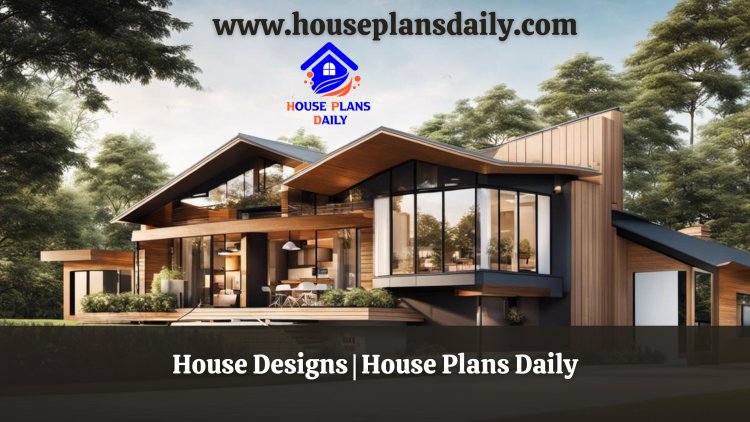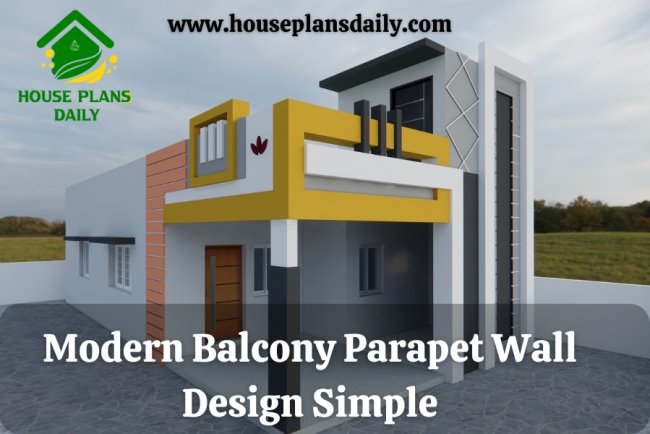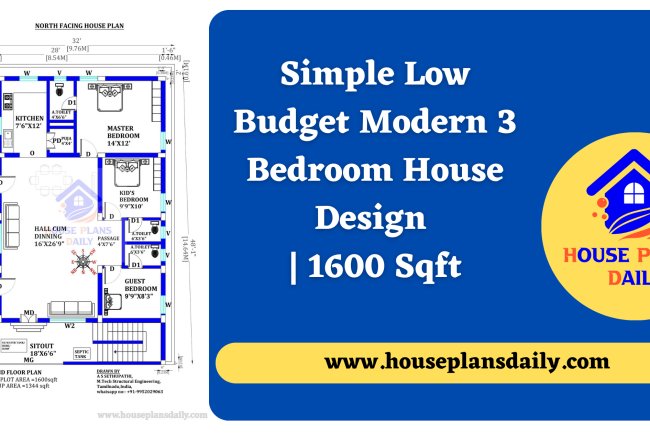House Designs | House Plans Daily
Home is not merely a dwelling, but an expressive canvas that reflects individual taste, lifestyle, and aesthetics. A perfect house design is a beautiful blend of art and science, underpinned by basic design fundamentals, inspired by current trends, fuelled by sustainability and shaped to enhance one's daily life. This exploration delves into the intriguing world of house design, taking into account the various architectural styles, the constantly evolving designs, sustainable practices, and practical aspects for a living space that truly symbolises 'you'.
Fundamentals of House Design
Architectural Styles
When it comes to house design, there's a wide array of architectural styles to choose from. Modern architecture, for example, focuses on simplicity and function, often with expansive glass windows and asymmetrical shapes. Colonial style homes, on the other hand, feature symmetry and a squared structure often with two stories. Other popular styles include Victorian, featuring detailed ornamentation and complex rooflines, and Mediterranean, which highlights outdoor living spaces with stucco walls and tile roofs. In contemporary design, you may see an emphasis on sustainability and natural materials.
Structural Elements
Structural elements of a house, such as the doors, windows, and walls, create the framework of the home's design. These elements not only serve practical roles but also contribute to the aesthetic appeal of the house. For example, strategically placed windows can enhance natural light in a home, while unique door designs can add a statement piece to the facade. The choice of materials used for walls and ceilings can deeply impact the overall feel of the house. From classic brick or wood to industrial concrete or steel, selecting the right material in alignment with your desired style is crucial.
Aesthetic Principles
Aesthetic principles in house design explore the visual effect and perception each design creates. Concepts such as balance, proportions and scale, rhythm, and emphasis are some of the guiding principles designers use in creating an aesthetically pleasing layout. For instance, balance can be achieved by evenly distributing visual weight in a room or throughout the exterior of a house. Meanwhile, the principle of rhythm relates to patterns or recurring motifs that guide the eye around the space.
Selecting and Combining Elements
The process of selecting and combining different elements in house design requires careful consideration. It is vital to understand the selected architectural style's characteristics and design principles clearly, ensuring that the structural elements and aesthetics align in harmony with it. A modern sustainable house, for example, might incorporate ample windows for natural lighting, an open floor plan for easy airflow, and natural building materials that fit the home's function and aesthetic.
Design Balance and Harmony
Achieving a balanced and harmonious design involves careful application of the aesthetic principles. In interior design, harmony is achieved when all parts of a room work together in agreement. This may involve repetition of colours, textures or patterns. Balance, on the other hand, is the concept of visual equilibrium. This can be achieved symmetrically, with elements mirrored on either side of a central axis, or asymmetrically, with different but equally weighted elements throughout the design.
To put it simply, the integral facets of house design are key to establishing a design aesthetic that is both functional and visually pleasing, tailored to accommodate your personal lifestyle. Each and every decision, from the choice of architectural style to the finer details of decoration, is indispensible when it comes to shaping the character and atmosphere of a home.
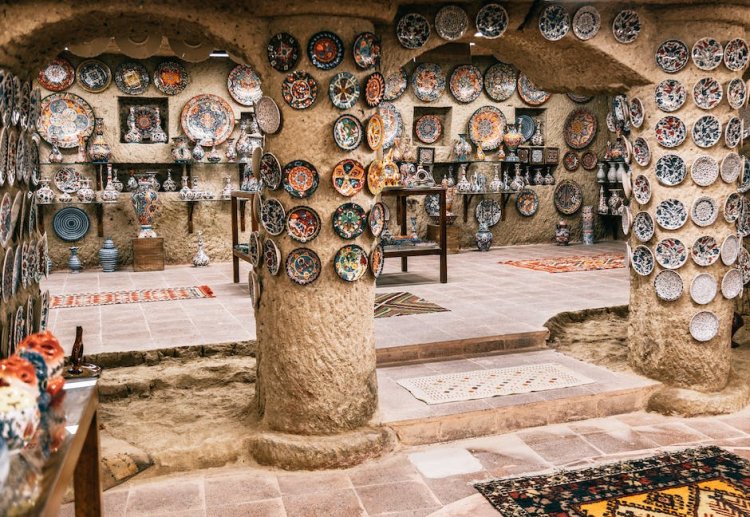
Current Trends in House Design
Current Trends
In the present day, the dominant trends in home design are shifting towards the utilisation of eco-friendly and sustainable architecture that seamlessly incorporate elements of nature within living areas. The distinction between outdoor and indoor spaces is slowly disappearing, with features such as rooftop gardens, internal courtyards, and living walls becoming increasingly popular in urban home designs. These green spaces do more than just add to the aesthetic value; they significantly enhance urban living conditions with improved air quality and tranquil spaces of leisure.
Colours and Materials
The house design palette for this year is seeing a shift towards more neutral, earthy colours instead of flashy, vibrant shades. Beiges, greys, off-whites, and pastel colours provide a soothing, minimalist backdrop that allows the architectural design and home accessories to really shine. Likewise, there is a strong emphasis on using local and sustainable materials, which not only reduces the carbon footprint but also adds a unique character and sense of place to each home. Natural woods, recycled metals, and locally-sourced stones are among the materials seeing major usage.
Minimalist Approach
Minimalism is undeniably one of the leading trends in house design currently. This design philosophy favours a less-is-more approach, with clean lines, simple shapes, and a lack of decorative clutter. In minimalist designs, each piece has a purpose and a place with plenty of negative spaces to emphasise the quality and design of the furnishings. Neutral colour schemes, paired with intentional asymmetry and open floor plans, bring a sophisticated, calming ambience to living spaces.
Technological Advancements
Technology plays a central role in contemporary house design. Homes are becoming smarter, with advancements in technology offering improved lifestyle, energy efficiency, and comfort. From home automation systems that manage lighting, heating, and electronic devices, to kitchen appliances that can sync with smartphones for an easy and convenient cooking experience. Security systems have also been enhanced with motion detectors, surveillance cameras, and smart lock systems providing homeowners with peace of mind.
Return to Tradition
In tandem with the trend towards minimalism and technology, there's a rising resurgence of traditional craftsmanship in architecture and interior design. An increased appreciation for vernacular architecture, traditional construction techniques and materials reflects a need for authenticity and sustainability. This trend is all about combining the old with the new, retaining historic architectural details while incorporating modern elements for comfort and style. Overall, it's a nod to the enduring appeal of designs that have stood the test of time.
Embracing Open-Plan Living
Open-plan homes have become increasingly popular in recent years, demonstrating their solidity as a time-tested trend in domestic architecture. Contemporary householders appreciate the seamless blend of shared spaces such as kitchens, lounges, and dining areas. Not only does this design approach enhance the sensation of spaciousness, it also promotes familial bonding and seamless interaction. Architectural elements like imposing ceilings and extensive windows are frequently employed to underscore the grandiosity of this unrestricted layout, thereby opening up the space even further.

Sustainable and Eco-Friendly House Designs
The Green Revolution in Home Design
Notably, there has been a meteoric rise in the popularity of sustainable and environmentally conscious housing designs. This change in sentiment comes in the wake of the escalating global climate emergency and a growing cognizance of the essentiality of conserving natural resources. As a result, an increasing number of people are fervently seeking inventive methods to shrink their environmental impact, and greening their dwellings has emerged as a highly effective strategy.
Green Materials
An essential aspect of sustainable and eco-friendly house design is the use of green materials. These architectural solutions reduce environmental impact and promote longevity and potential recycling of the residence. For instance, cork, bamboo, and reclaimed wood provide excellent alternatives to conventional building materials and significantly reduce deforestation. Moreover, there are recycled steel and composite materials for structural construction, which are sturdy, durable, and eco-friendly. Insulation alternatives, such as cellulose or sheep’s wool, offer superior thermal performance and ensure a reduced need for artificial heating or cooling.
Renewable Energy Solutions
Modern eco-friendly house designs are focusing significantly on harnessing renewable energy. Solar panels are the most commonly adopted solution, converting sunlight into electricity. This technique considerably lessens homeowners' dependency on grid energy, thus decreasing their carbon footprint while creating potential savings on energy bills. Wind turbines are another viable option, particularly for homes located in windy regions. Moreover, geothermal energy, using the earth's heat to produce power, has proven a highly effective and sustainable solution, albeit at a higher installation cost.
Designs for Natural Lighting and Ventilation
Eco-friendly house designs do not solely rely on materials and energy sources; instead, they cleverly utilise natural elements to maximum advantage. By incorporating larger windows, solar tubes, and strategically placed mirrors, these designs provide an ample amount of natural light, reducing the reliance on artificial lighting solutions. Similarly, cross-ventilation designs allow for natural airflow, decreasing the need for air-conditioning. Green roofs and walls, incorporating vegetation, not only enhance a building's aesthetic value but also contribute to thermal comfort by providing natural insulation.
Benefits of Sustainable House Design
Adopting sustainable and eco-friendly house designs provides homeowners with immeasurable benefits. Not only does it lessen the environmental impact, but it also contributes to significant savings on energy and maintenance bills over time. Furthermore, living in such dwellings often proves healthier due to the reduced presence of harmful chemicals found in conventional building materials. With these significant added benefits, the attractiveness of sustainable and eco-friendly homes is clearly evident.
Emerging Trends in Sustainable Residential Design
The burgeoning urgency of climate change issues has prompted architects and real estate developers to consistently discover new methods to enhance the eco-friendliness of their designs. This dynamic field in architecture and home design is predicted to introduce more groundbreaking developments in the future. The rising societal awareness about sustainability cements the likelihood of eco-friendly practices becoming an integral part of mainstream residential building designs.
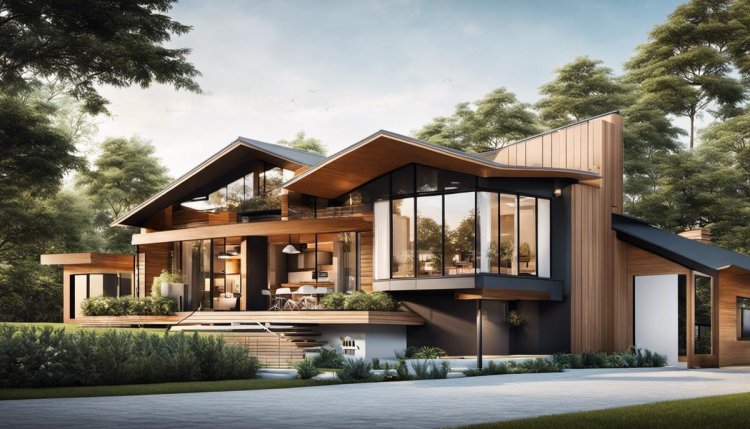
Practical Tips for Designing Your House
Guidance for Efficient Space Planning
The design of your home hugely depends on how effectively you plan your space. It's crucial to factor in the functionality and interconnection of individual rooms. You might opt for an open-plan design for a smooth transition between living areas, or opt for distinctively separated rooms to ensure requisite privacy for bedrooms or home offices. Wise and efficient space planning is key to maximizing your available square footage and crafting a harmonious, functional living space.
Functional Fixtures and Finishes
When it comes to choosing fixtures and finishes, consider both style and practicality. The selection of the right fixtures can add character to a space, whilst the finish can either enhance or soften those details. Consider durability and maintenance alongside aesthetic appeal. For instance, in high use areas such as the kitchen or bathroom, opt for finishes that are easy to clean and able to withstand heavy usage. In living or bedrooms, softer finishes may be appropriate to create a relaxed and cosy ambience.
Furniture Selection
The selection of furniture should not only reflect your personal style and the overall theme of the house but should also be practical. Consider the function of the room and choose furniture that is fit for purpose, such as comfortable seating in living areas and hard-wearing surfaces in dining or utility spaces. Always remember to factor in room size and space when planning where to place furniture, ensuring every piece has a purpose and enhances the utility of the space rather than cluttering it.
Natural Light and Ventilation
Incorporating sufficient natural light and ventilation in your house design is vital. Large windows, skylights, and open spaces can enhance natural light, making your interior spaces feel larger and more welcoming. Effective ventilation is also key to maintaining a healthy and comfortable living environment, preventing dampness and condensation. Consider the placement of your windows to maximise cross-ventilation and improve air quality indoors.
Durability and Maintenance
When designing your house, also think about the long-term durability and maintenance of your chosen materials and finishes. Certain materials might look stunning in a showroom but might wear down or lose their lustre in a busy family home. Be sure to research the longevity and care instructions of your chosen materials to ensure they’ll stand up to daily wear and tear while retaining their beauty.
Outdoor Connection
A harmonious connection between the indoor and outdoor environments of your home design brings added functional and aesthetic benefits. This connection could be as simple as a well-located window providing a pleasing view, or as elaborate as integrated outdoor living spaces or terraces. Planning this in advance can allow for more unified design and foster an indoor-outdoor lifestyle.
Personalisation
Lastly, your house should reflect you and your lifestyle. Whether it's a bespoke kitchen perfectly tailored to your culinary endeavours, an integrated home office for your remote work needs, or an elaborate playroom for the little ones, the design should cater specifically to your needs. Express your personal taste, from colour schemes to artwork, creating a space that is distinctly yours.
Bear in mind, a truly successful house design isn't solely about aesthetic appeal, it goes much further encompassing comfort, functionality, and ensuring that it aligns seamlessly with your lifestyle.
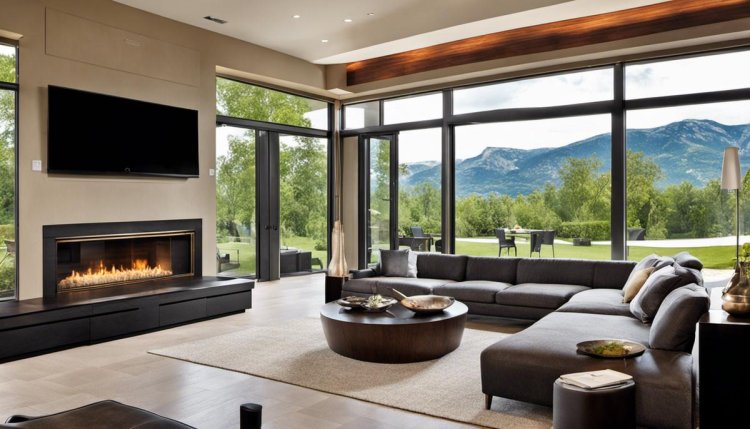
Future of House Designs - A Look Ahead
Latest Trends in Home Construction
Over the coming years, one can expect remarkable transformations in house design, driven by revolutionary construction techniques. For example, the advent of emerging technologies like 3D printing has made its mark on construction industries globally. It proves invaluable in forming intricate designs, minimising waste, and dramatically reducing the time taken for construction. Similarly, robotic technology is set to redefine construction processes. The introduction of automated bricklayers and concrete dispensing machines is already making the construction process quicker, safer, and more efficient. Once these techniques are widely embraced, they have the potential to utterly transform the home building process.

Smart Home Systems on the Rise
With the advent of the Internet of Things (IoT), smart homes are evolving to become more responsive and user-friendly. In essence, a smart home is essentially a living environment interconnected with numerous devices that communicate with each other. From security systems that can be controlled remotely, to lighting systems that adjust to our circadian rhythms, to kitchen appliances responding to voice commands - the possibilities seem endless. Future house designs will likely incorporate smarter, more intuitive home automation systems, making everyday tasks easier whilst saving energy.
Minimalist Design: The Future Aesthetic
Minimalist design is increasingly becoming the aesthetic of choice for many home designers and owners. A minimalist approach to design focuses on simplicity and functionality, getting rid of unnecessary elements and creating spaces that feel open, calm, and orderly. This aesthetic approach echoes our society’s growing interest in conscious consumption and sustainability, and is a trend that experts predict will remain influential in house design for many years to come.
Sustainable Design and Energy Efficiency
In the face of climate change, incorporating green features into house design is becoming less of an option and more of a necessity. Renewable energy systems like solar panels, energy-efficient appliances, water-saving fixtures, and intelligent insulation are already popular in modern house designs. In the future, we might see even more emphasis on sustainability, with designs that incorporate natural materials and systems that mimic nature's way of dealing with waste and water to minimise environmental impact.
Adaptable Spaces: The New Norm
As our lifestyles become more complex and fluid, creating adaptable spaces is becoming an important aspect of future house designs. Adaptable spaces are rooms that can easily change their function. For example, a home office that can convert into a guestroom or a kitchen which can double as a dining area. This trend reflects changing lifestyle habits such as more people working from home, families living together in multi-generational homes, and the need to maximise space in urban environments.
Above all, the homes of the future will reflect our changing social, economic, and environmental values. They will be built faster and more efficiently, be more comfortable and convenient to live in, and be more in tune with the environment.
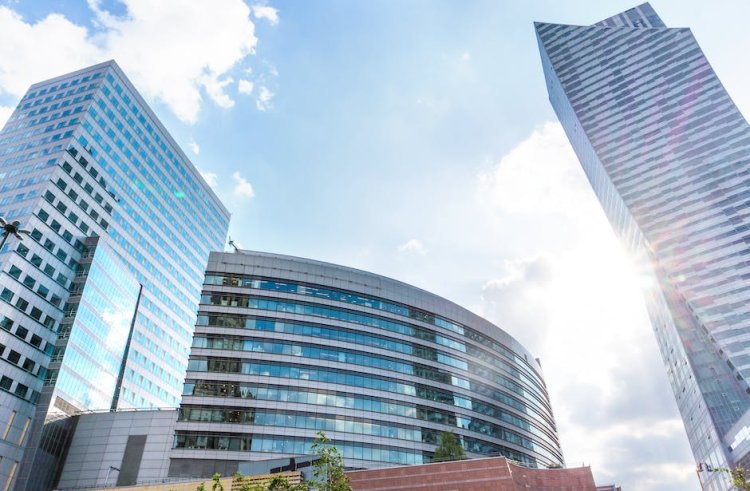
As we look towards the exciting and transformative future of house design, it's clear that the architecture of our spaces will continue to reflect the changing dynamics of our lives, prioritising sustainability and integrating smarter technologies. The possibilities are truly boundless. Let's collectively envision a world where our homes are not just our havens, but testimony to our commitment to the environment, our understanding of aesthetic beauty and our sense for practical, intuitive living.

